Let's Explore Indian Spices and the Indian Spice Box
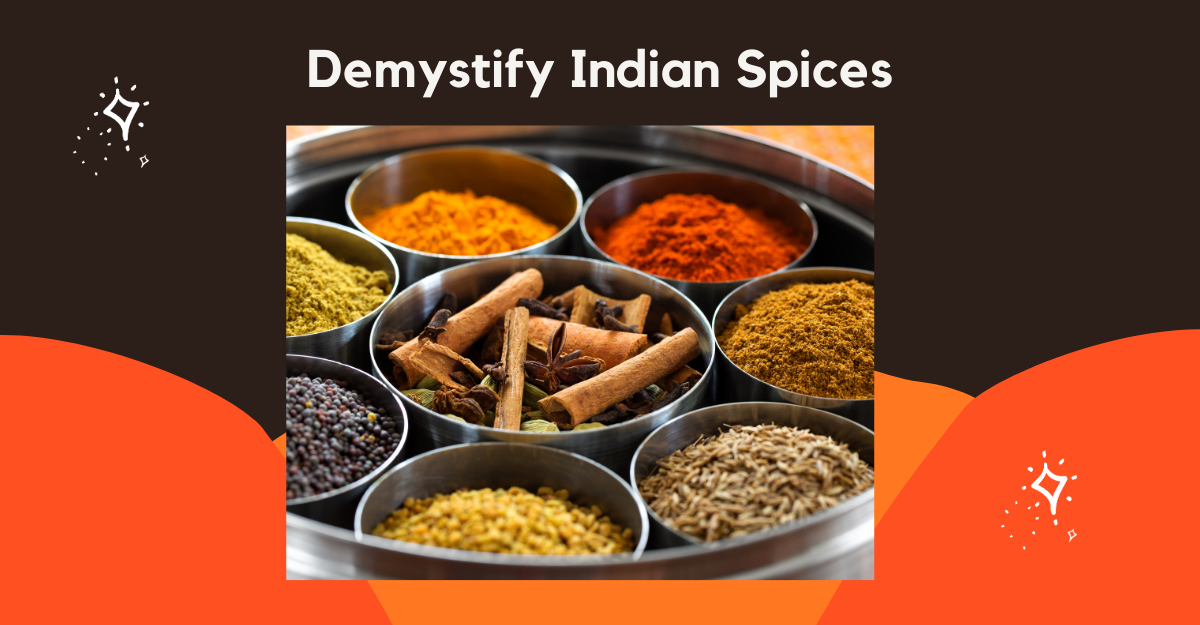
Demystify 5 Key Indian Spices with me.
Indian spices have always intimated me. The sheer volume of the spices used in most Indian recipes and the process to prepare the spices for use seemed confusing and laborious.
I succumbed to my feelings of inadequacy and accepted the fact that I would enjoy Indian food in Indian restaurants, made by those who understood the complex spices and their role in each dish.
A time came that I lived in an area that had no Indian restaurants. I made the brave decision to try and make my first Indian meal. There really wasn’t a choice, was there? I needed to demystify 5 Key Indian Spices to get started.
Gordon Ramsay Tweeted
Gordon Ramsay@GordonRamsay – Jul 13, 2020
Tweet: Last night on #Uncharted I was in beautiful #India and behind the scenes on #Scrambled I whipped up a spicy scrambled egg #roti with some local spices ! This is one of my favourites of the season !
Having decided on making Chicken Masala, the next step was the shopping list. The non-spice ingredients were just like any other meal, chicken, onions, etc. Not scary at all.
Moving on to the spices, yes, the list was double, if not triple, the list of spices I’ve ever used in other meals I’ve made. I jotted everything down and headed to the store I thought I’d have the most luck finding the unique spices.
Time to cook. First step, set up my mise en place.
Demystify 5 Key Indian Spices with us!
The aromatics were a completely different experience than other meals I cook. I started to understand why spices have led to wars throughout the ages.
A notable difference between cooking, say Hungarian paprikash chicken and dumplings, and Indian chicken masala, is that there is a certain treatment, or ceremony if you will, in preparing the spices to extract their full flavor and aromatic potential in Indian cooking.
This is an element of Indian cooking that often intimidates cooks away from even trying.
“I love Indian food – it’s my favourite cuisine. I love the mixture of spices and the subtle flavours. It’s really erotic.” Joe Perry
I followed the instructions to the nail and proceeded through the remaining steps.
Everything was ready, and the kitchen smelled absolutely amazing!
The chicken masala was quite frankly – FANTASTIC! We’re talking restaurant quality Indian food, homemade by Moi!
I hope my experience will provide some confidence for you that you can cook an Indian meal as well. Let’s dive into five of the key Indian spices used in Indian cooking!
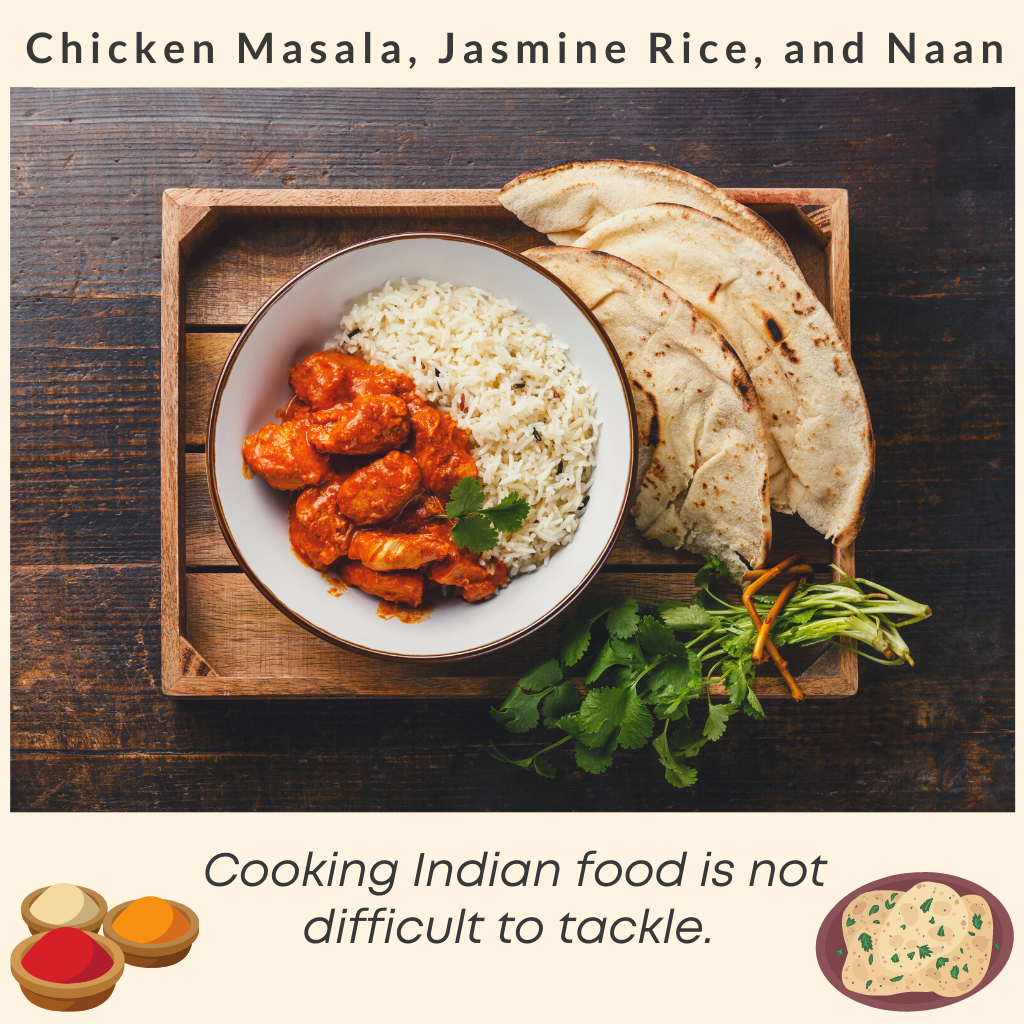
Demystify 5 Key Indian Spices
In Indian cooking, there are seven main spices. We will cover five of them here. For reference, the seven spices are:
7 Main Indian Spices
- black pepper
- cardamom
- chili peppers
- cinnamon
- coriander seeds
- cumin seeds
- turmeric
Cumin
- The most commonly used spice in Indian cooking.
- Cumin is a prevalent spice in Indian cooking.
- Gives a depth of character to vegetable and lentil dishes and chutneys.
- Second most popular spice in the world. (Black pepper is the first.)
- The seeds are pungent and aromatic and have a warm, earthy aroma.
- Cumin is part of the carrot family.
- Cultivation of cumin is believed to go as far back as 2,000 B.C.
- Cumin originates in the Middle East and the Mediterranean region.
- Indian is the world’s largest manufacturer of cumin. They produce over 70% of the world’s supply of cumin.
- Indians consume over 90% of all cumin in the world.
- Ancient Egyptians used cumin to mummify bodies.
- It was used to pay taxes.
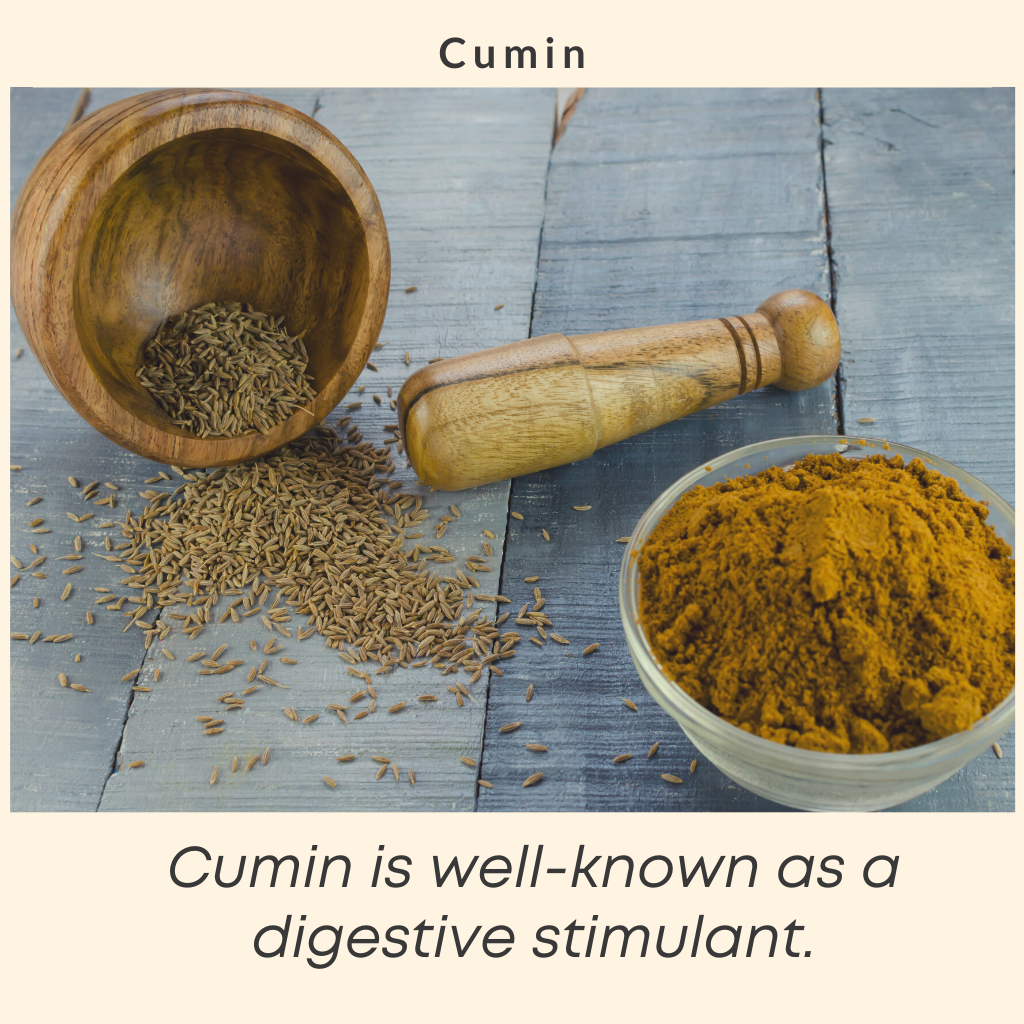
Health Benefits of Cumin
- Cumin is well-known as a digestive stimulant.
- Add to lentil dishes to dissipate annoying gas.
- People in India use cumin to treat fever, diarrhea, and vomiting.
- Used to treat poor appetite.
Cumin Folklore
- It was believed that if there was plenty of cumin in the home, chickens and lovers would not run off during the Medieval period.
- If newlyweds carried cumin on them during their wedding ceremony, they would have a happy marriage.
Turmeric
- Turmeric is called Haldi in Hindi.
- A bright yellow spice, is a flowering plant and part of the ginger family.
- Works as a coloring agent.
- Turmeric can become bitter in large quantities and eating too much of it can upset your stomach, cause nausea and dizziness.
Health Benefits of Turmeric
- It is a powerful anti-inflammatory and people deliberately use the spice to reduce inflammation.
- Used to reduce the pain from arthritis.
- Turmeric lowers cholesterol.
- Helps to prevent heart disease.
- It’s believed to boosts cognitive ability.
- Can fight off viruses and the flu.
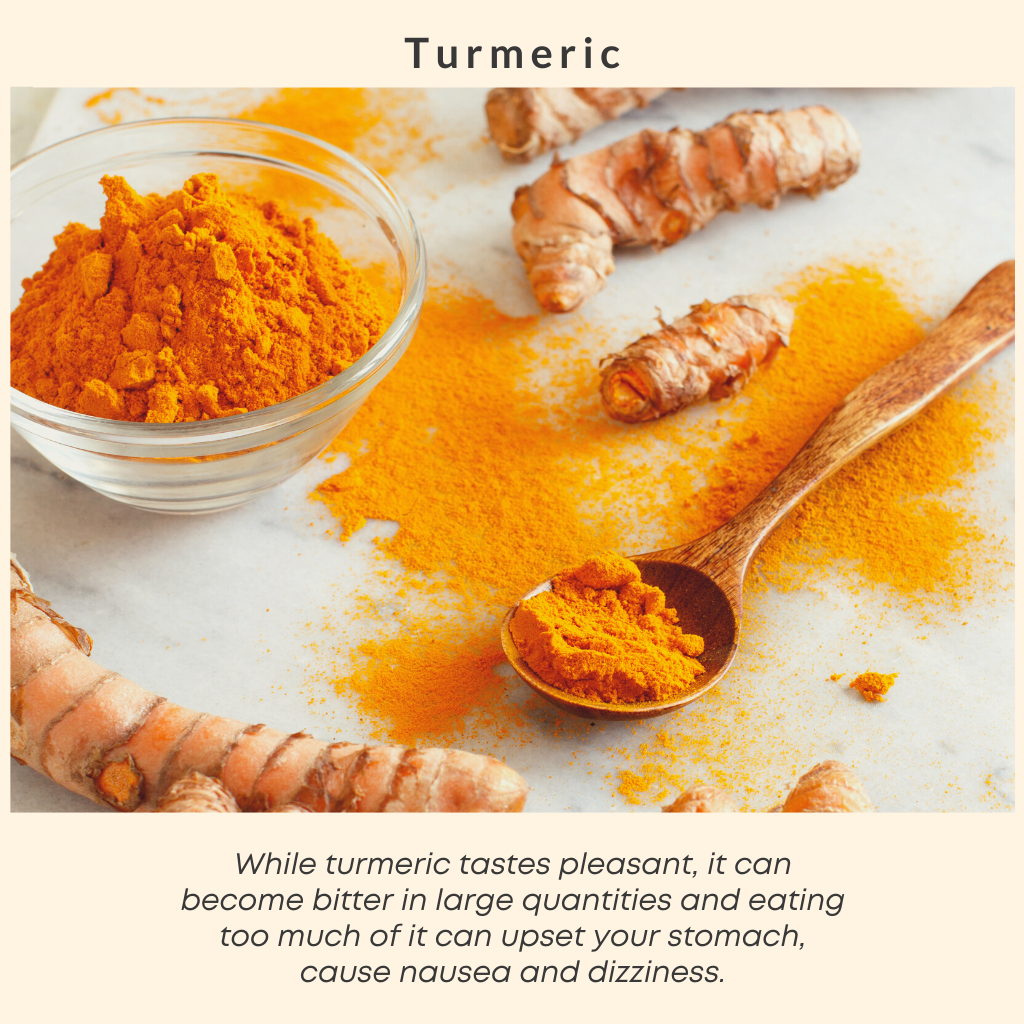
FUN FACT: India produces nearly all of the world’s turmeric and consumes about 80% of it.
Coriander
- Coriander: This herb has a rich and diverse past going as far back as 1550 B.C.
- It’s believed to be one of the most ancient herbs.
- Discovered in the tombs of the ancient Pharaohs and mentioned in the Bible.
- Native of the Mediterranean region.
- Has a lemony, citrus flavor once crushed.
- Described as a warm, spicy and slightly sweet, nutty, citrus taste.
- Has a thickening affect when cooked.
- Coriander is a key spice in garam masala.
- Used frequently in Indian curries.
- The book, The Tales of the Arabian Nights features this ancient herb as an aphrodisiac.
- Coriander was added to love potions in the Middle Ages.
- Roasted coriander seeds, called dhanadal, are enjoyed as a snack in India.
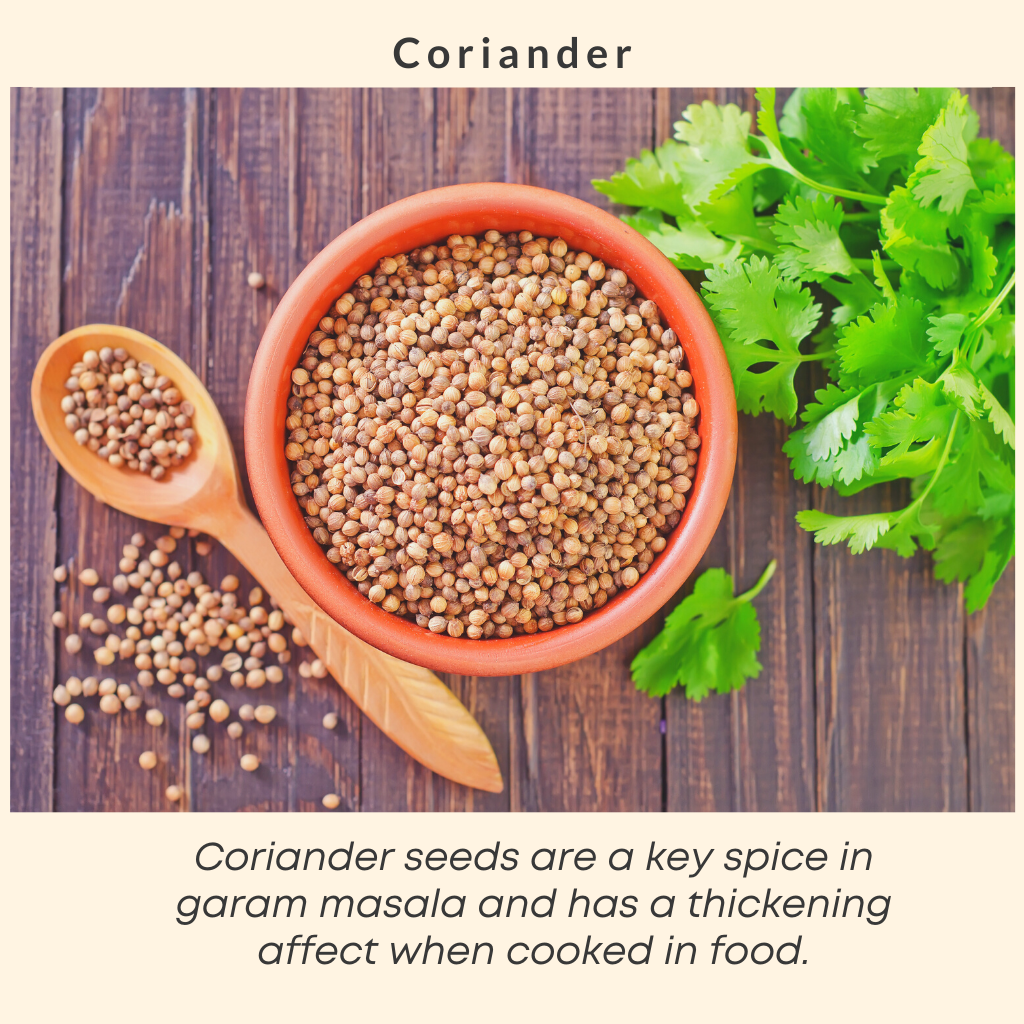
Health Benefits of Coriander
- Fat-free
- Good source of fiber
- Contains many of the B vitamins
Cardamom
- Cardamom: elaichi in Hindi, has been around for over 4,000 years and is one of the most expensive spices in the world, and one of the oldest.
- Has a strong, somewhat sweet, taste and an intense smell.
- The Greeks and Romans were known to add this mystic spice into their perfumes.
- The Egyptians used cardamom to freshen their mouths and breath.
- Cardamom is considered an aphrodisiac and has been long used to “heat things up” in Eastern countries.
- It’s believed that by chewing some cardamom seeds before you talk to someone you’re interested in, it will encourage them in your direction.
- Cardamom is one of the key spices in garam masala.
- There are two types of cardamom: green and black. Green cardamom is most commonly used.
The Canterbury Tales refers to cardamom as “the spice of paradise”.
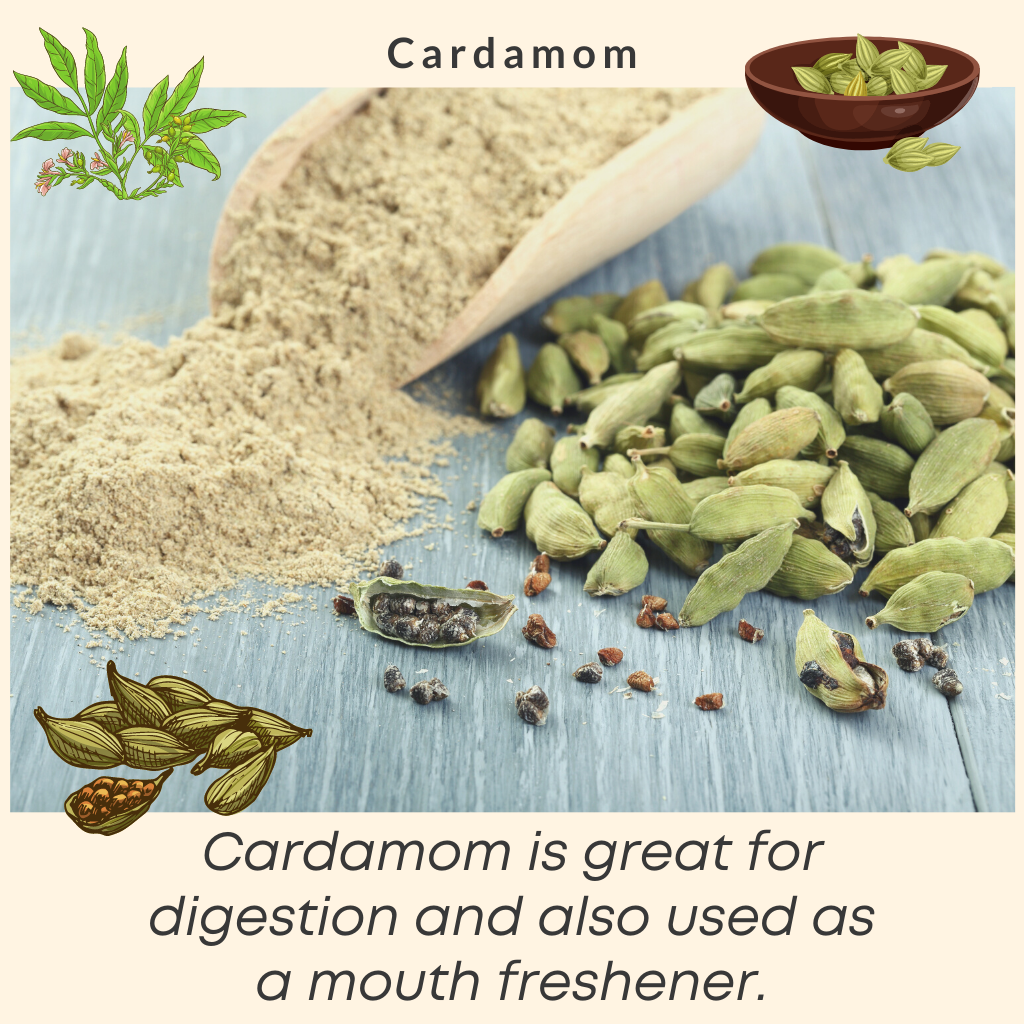
Health Benefits of Cardamom
Cardamom boasts many health benefits.
Quick Tip: Add a pinch or so of cardamom to hot tea for enhanced flavor & health benefits.
- Cardamom is an antispasmodic. Drinking some cardamom tea or chewing some cardamom seeds can reduce nausea and relieve an upset stomach caused by ingestion or IBS.
- Can relieve or reduce motion sickness.
- Can relieve or reduce congestion from allergies, cold, or the flu.
- Contains Vitamin C, an excellent antioxidant.
- Cardamom is an effective detoxicant
- Great for liver cleansing. It works similar to a diuretic, flushing toxins out of the body.
- Cardamom kills the bacteria that causes bad breath.
- It is used as a breath freshener.
- Used as a remedy for the hiccups.
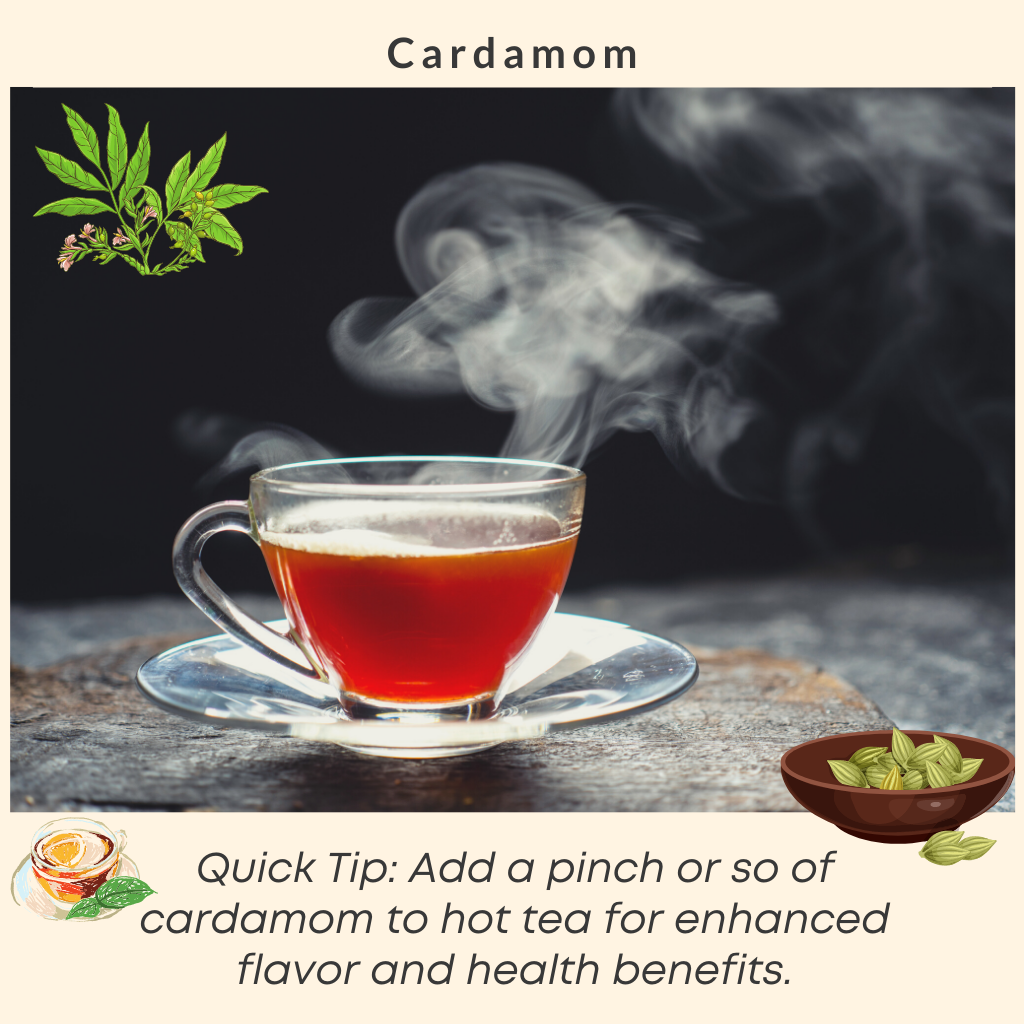
Spiritual Benefits of Cardamom
- Used as a love and lust aid.
- Can increase clarity of thought.
- Used to increase relaxation.
- To induce love or lust, you can burn some, add to little sachets, or use in drinks and food.
Cinnamon
- Cinnamon is believed to be one of the oldest spices in the world.
- The Bible mentions cinnamon many times, including Exodus 30:23 and Proverbs 7:17.
- Moses added cinnamon to his holy oil for anointing purposes.
- Ancient Egyptians used cinnamon to help preserve dead bodies.
- Two common types of cinnamon are Ceylon and Cassia.
- Cinnamon is the actual bark of the cinnamon tree.
- The cinnamon tree can grow up to 60 feet!
- Cinnamon sticks are called quills.
Health Benefits of Cinnamon
- Chinese medicine recognized the value of cinnamon as a healing agent.
- Cinnamon can help with nausea and colds.
- Acts as an anti-inflammatory.
- Excellent source of antioxidants.
- Aids in controlling blood sugar levels.
- Beneficial for those with diabetes.
- High in fiber and calcium.
- Contains iron and magnesium.
- Cinnamon helps fight against degenerative brain disorders, such as Alzheimer’s.
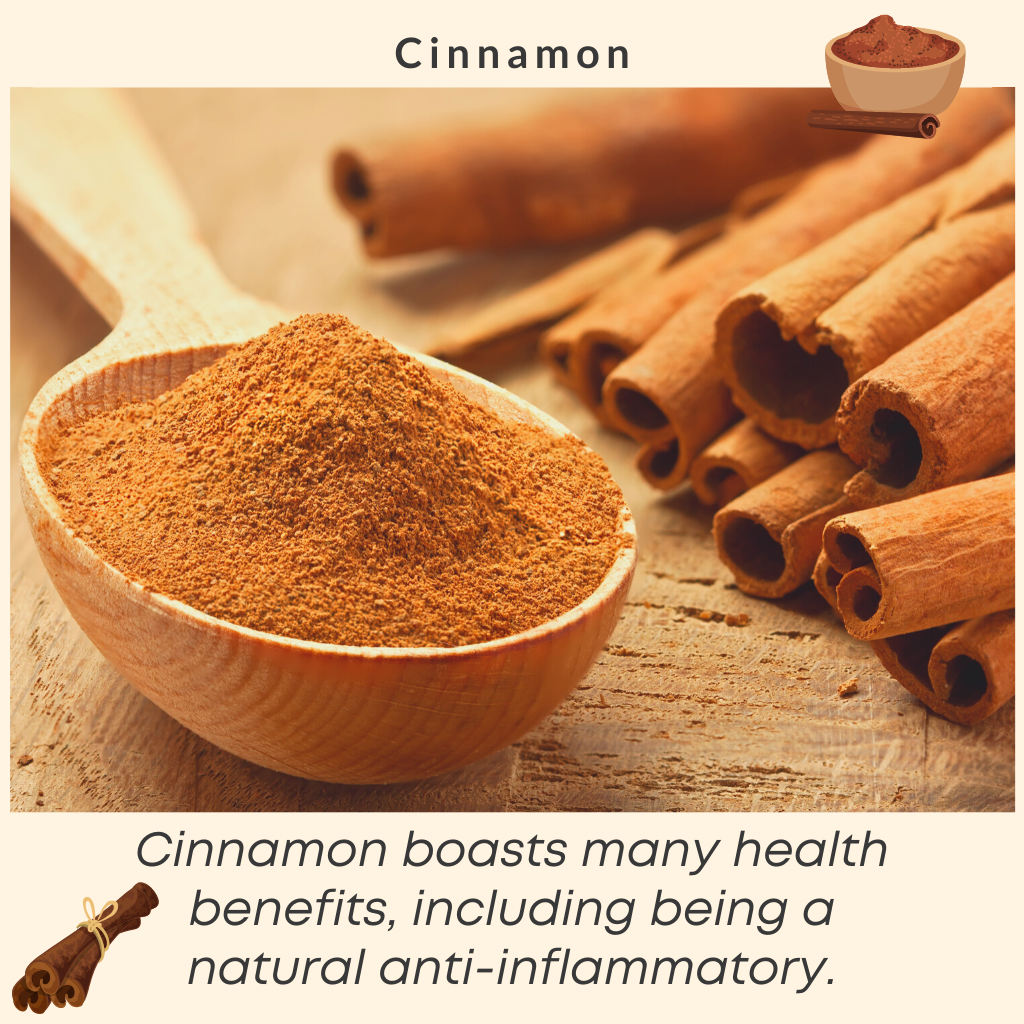
I hope we’ve been able to demystify 5 Key Indian Spices for you.
Masala Dabba – Indian Spice Box
With all the spices needed to cook an Indian meal, organization is critical. The element of time is key to Indian cooking. If you get side-tracked trying to find this or that spice, something will end up burning!
This is where the Masala Dabba comes into play. Any respected Indian home kitchen has a spice box.
The concept of the Masala Dabba is organization. All the spices you’ll need are accessible right in the box, that you can place right at the stovetop making the cooking process practical and efficient.

Check out our post on Naan bread, including some fool-proof recipes. Awesome Things to Know About Naan Bread & Recipes
Tags
1 COMMENT
Leave A Comment
Error: API requests are being delayed. New posts will not be retrieved for at least 5 minutes.
There may be an issue with the Instagram access token that you are using. Your server might also be unable to connect to Instagram at this time.
Click here to troubleshoot.
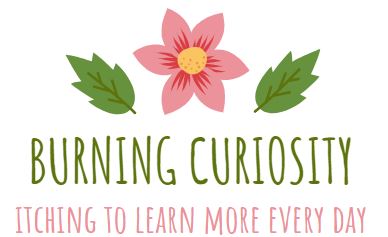


Jenn | 15th Feb 21
Wow so cool